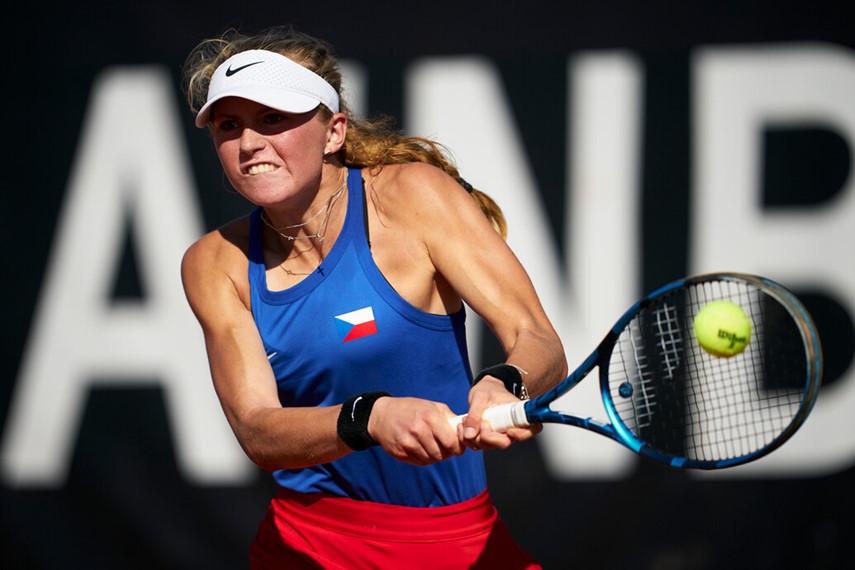By Andrea Mastronuzzi
Translated by Michele Brusadelli and Chiara Ragionieri
After being close to enriching her collection of Grand Slam titles a few weeks ago in Melbourne, Sania Mirza has played the last official match of her career. It happened last week in Dubai, which has been her home for ten years and where she has opened two tennis academies, after the first one she founded in 2013 in Hyderabad, her birthplace in India. Here, she began to become familiar with the racket when she was six, after seeing her cousins having fun on the tennis courts during a family vacation in the United States.
However, at home in India, tennis courts were an absolute rarity and Sania said that the surface on which she took her first steps was very different from the standards of the international tournaments: no clay, no grass and not even hard courts, but cow dung. That’s where the journey of a little girl started. A little girl who, by winning and breaking established patterns, became the undisputed queen of Indian tennis.
“As women, we are given a long list of things that we can’t do, as opposed to being encouraged to go and follow our dreams,” she said.
When Sonia participated in the first tournaments of her life, tennis was not an unknown sport in India. The men’s movement already had a well-established tradition, thanks to the Krishnans (father and son) and the Amritraj brothers. Soon other important players like Bhupathi and Paes would emerge. Yet, there was no system capable of systematically guiding young players and, above all, for women such a path. Sania, however, could rely on the support of her parents and in particular on the experience of her father Imran, publisher of a sports magazine and cricketer. Only in this way could her talent blossom in a context which, though not hostile, was certainly unprepared.
At eight-years-old Sania triumphed in a home tournament, beating in the final an opponent who was twice her age. The competition level in her homeland couldn’t be compared to what she would encounter in the international arena. But Sania proved she was ready for the big leap: in 2003, aged 18, she won the junior doubles tournament at Wimbledon, and this was the sign of an imminent and rapid rise. In 2005, she played her first Grand Slam in Melbourne, the first Indian woman in history, and made it to the third round, where she was beaten by Serena Williams. Then, in the same year, she reached the last eight in the US Open. This has remained her best singles result in majors (her highest ranking is 27, reached in 2007), also because she decided to focus more and more on doubles. From 2013 she actually became a full-time and successful doubles (women’s and mixed) player.
She won 6 Grand Slam doubles titles, three of which in mixed doubles, and a total of 43 tournaments. Such achievements drove her to top spot in the rankings, which she occupied for 91 weeks. She is considered one of the best women’s doubles players in the history of tennis.
Among her signature shots, she was gifted with a very powerful forehand, which somehow contrasted with the elegance of her volleys and her stylish moving on court.
This is one of the features which made the team she formed with Martina Hingis between 2015 and 2016 one of the strongest and most enjoyable to watch. Together they won three Grand Slams (Wimbledon and US Open in 2015, and Australian Open in 2016) and 14 tournaments overall. Their 41-match winning streak is the third all-time best. Only Navratilova-Shriver and Novotna-Zvereva have done better.
However, as Sania explained in an interview with Wimbledon media last year, knowing there was “even just one person who was inspired by my story” was ever so much more important to her than her victories.
Her motherhood in 2018 is an integral part of this story as well.
The former world number one in doubles said that until she became a mother, she was constantly asked when she would take that step: “I’ve had journalists ask me this question in a post-match press conference right after winning a grand slam final, and with the trophy by my side. It’s as if I would not be a complete woman until I became a mother, no matter what I achieved as an athlete.”
After giving birth to Izhaan, Sania came back to court to prove that family and career can co-exist, and once again, to inspire other women.
Her career and private life as a free woman, ready to do anything to achieve her goals, spurred criticisms and threats. In 2005 a fatwa was issued against her by a group of Muslim scholars who claimed that her clothing on court was contrary to Islamic precepts.
Again, in 2010, her marriage to Pakistani cricketer Shoaib Malik was much talked about in India.
The right-wing Hindu nationalist party, the BJP, asked Mirza to “reconsider” her decision to marry a Pakistani, whereas in her husband’s country, many celebrated this wedding as a sort of triumph of Pakistan over India.
In reality, it was just another moment in Sania’s life where her personal priorities prevailed over cultural and social conventions.
And this is the legacy she leaves us, enshrined in a frame made up of tennis successes, forehand passing shots and delightful volley winners.


 Hot Topics3 days ago
Hot Topics3 days ago
 Latest news3 days ago
Latest news3 days ago
 Hot Topics2 days ago
Hot Topics2 days ago
 Hot Topics3 days ago
Hot Topics3 days ago
 Focus2 days ago
Focus2 days ago
 Focus2 days ago
Focus2 days ago
 Focus2 days ago
Focus2 days ago
 Hot Topics2 days ago
Hot Topics2 days ago























